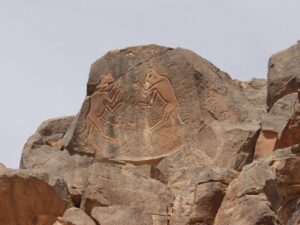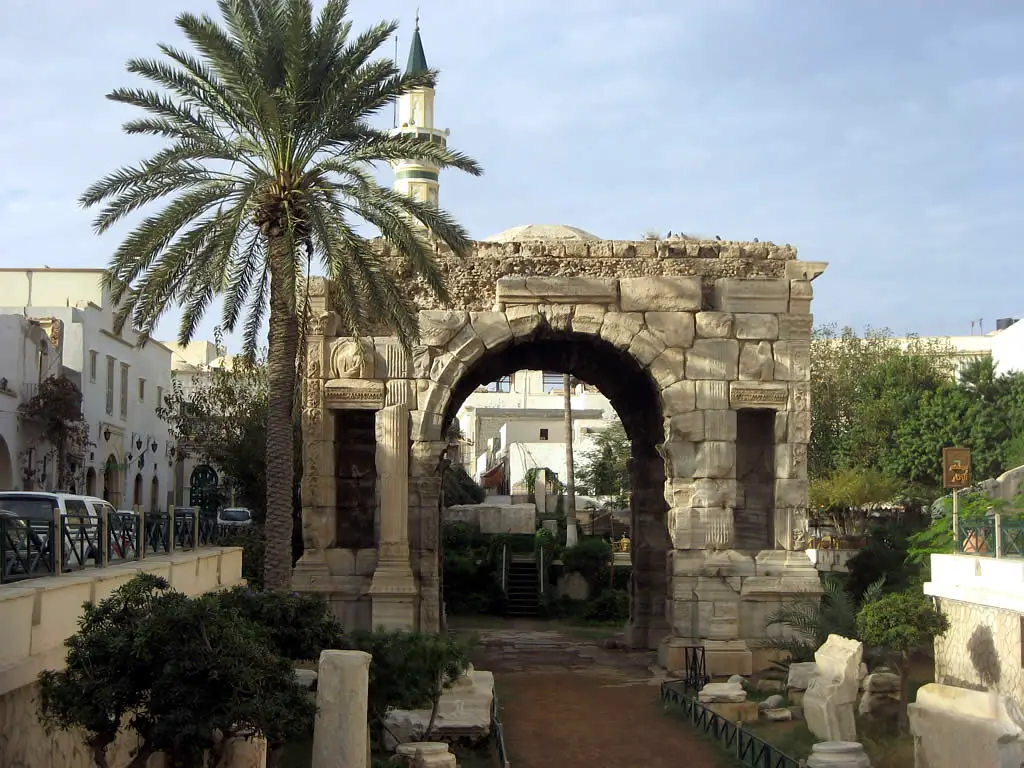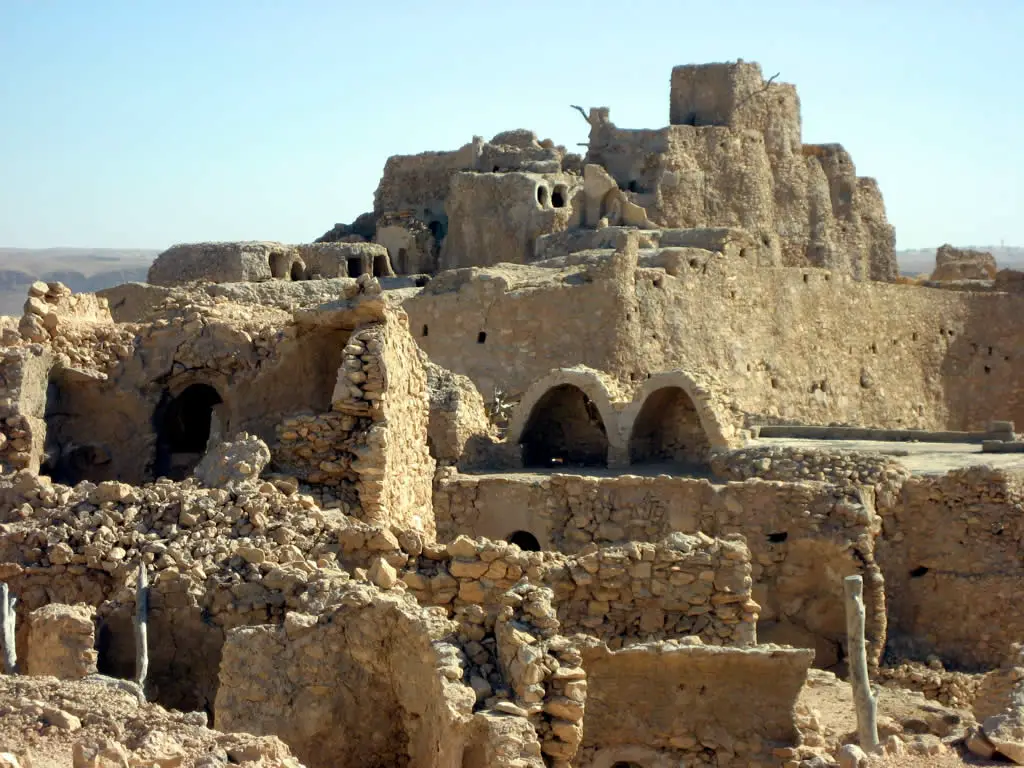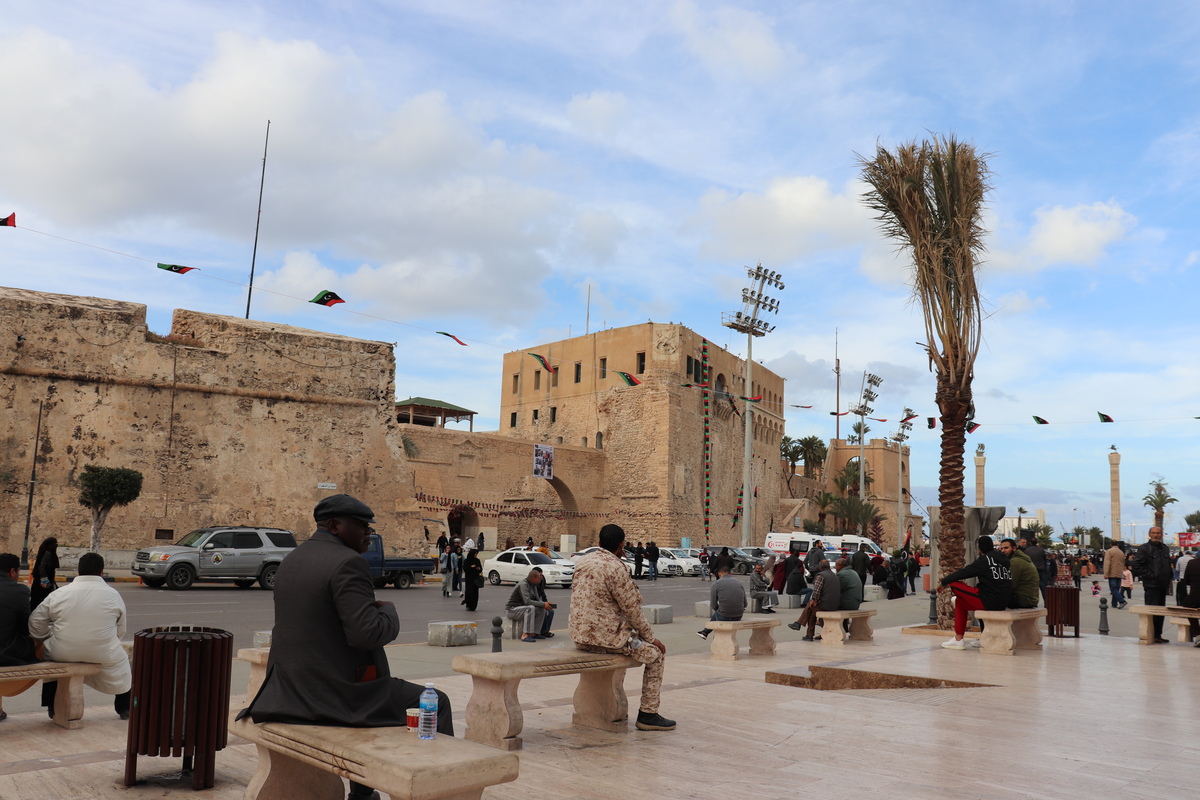Wondermondo 🢖 World 🢖 Wonders of Africa 🢖 Wonders of Libya
Territory
Wonders of Libya
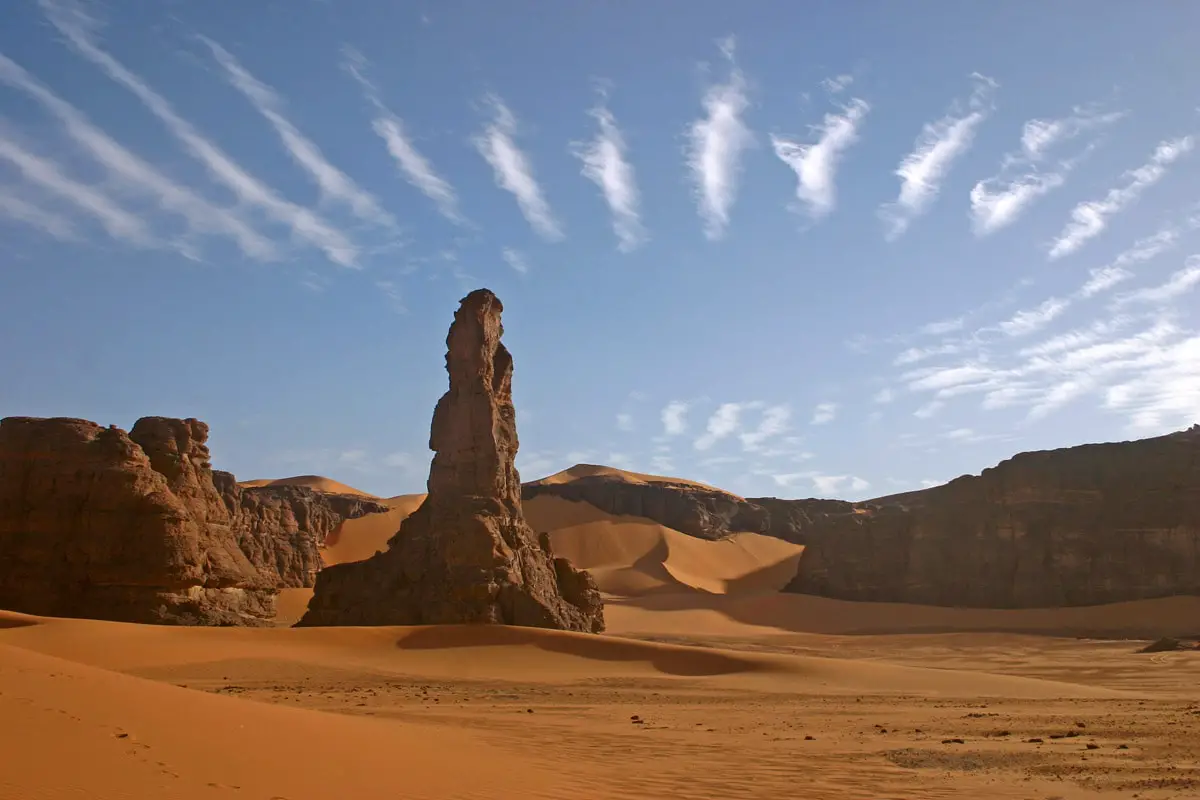
 Highlights
Highlights
Libya, for the most part, is covered with desert. This country is enormous, f.e. distance from Tripoli to the southernmost point of Libya exceeds the distance between Tripoli and Vienna. This giant land has lots of secrets – landmarks created by long lost cultures. The most amazing wonders of Libya are:
- Roman and Greek heritage. African provinces were among the richest in the Roman Empire and here flourished arts and sciences. Time has passed and now we can admire just ruins of these ancient cities.
- Heritage of Garamantes. The most interesting indigenous culture in Libya is the rich and too little known culture of Garamantes which flourished in the time period between 500 BC and 700 AD. Although little mentioned today, this was a highly developed and very interesting culture, Garamantes built extensive underground irrigation systems and amazing cities.
- Petroglyphs and cliff art. Libya has thousands of sites with high-quality paintings and petroglyphs, created over many thousands of years. Drawings often show animals which are long extinct here and thus hints at a different climate and nature in the past.
Map with the described wonders
If you see this after your page is loaded completely, leafletJS files are missing.
 Top 25 wonders of Libya
Top 25 wonders of Libya
Geological wonders
Afzejare Arch (Forzhaga Arch)
Ghat
Enormous free-standing natural arch in the desert, with a span of 32 m and a height of 43.5 m.
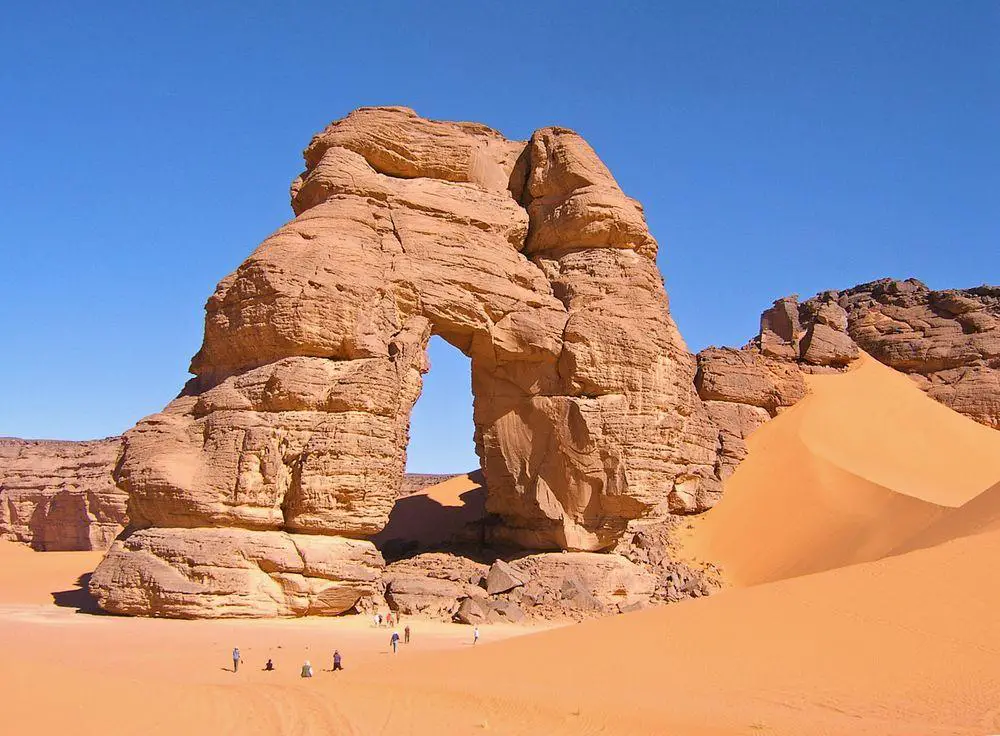
Lethe Cave
Benghazi
Large cave chamber with a brackish lake. This is the supposed legendary site of the Lethe River of Forgetfulness.
Tin Khlega Arches (Fezzi Jaren Arches)
Ghat
Group of large natural arches – a block of rock standing on several tilted columns. The largest arch has a span of 11 m and a height of 18.6 m. There are numerous other spectacular arches in Akakus Plateau.
Archaeological wonders
Leptis Magna
Murqub
Some of the best preserved Roman ruins. This city was founded by Phoenicians around 1000 BC and in the 1st century AD was incorporated into Roman Empire. Abandoned sometime around 650 AD.
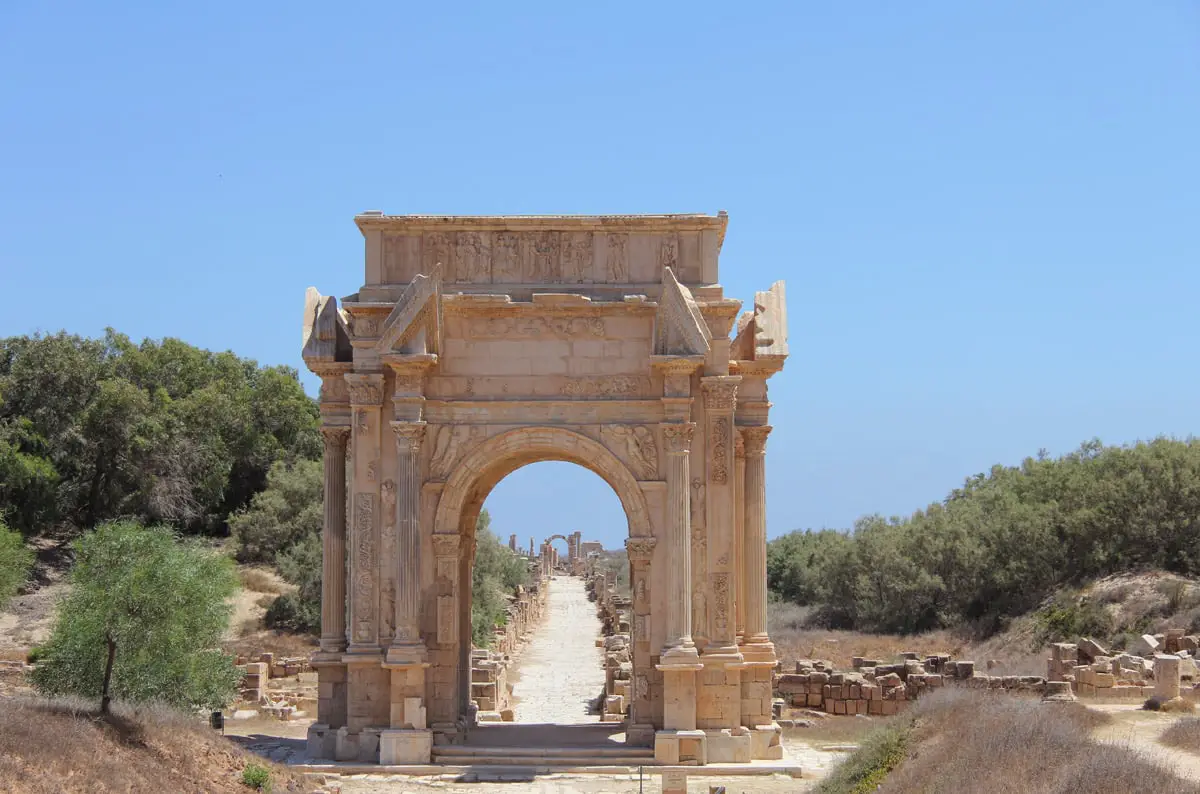
Cyrene
Jabal al Akhdar
Spectacular ruins of ancient Greek and Roman city, once the most important city of these empires in Africa, capital of Cyrenaica, a city of philosophers. Founded in 630 BC and abandoned after several devastating earthquakes in 365 AD. Contains ruins of the Temple of Apollo and the necropolis. Here is located also the Cave of Apollo – an approximately 300 m long natural underground passage.
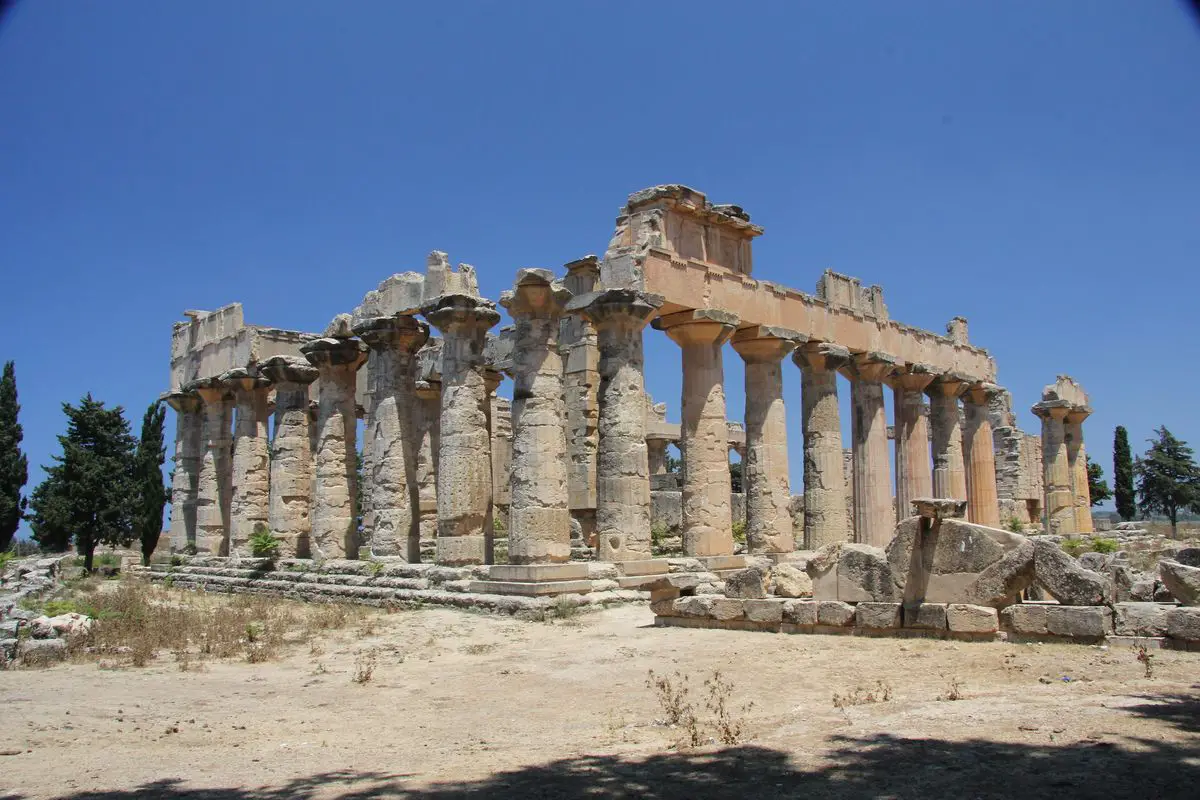
Sabratha
Zawiya
Ruins of a historical city that was established by Phoenicians sometime around 500 BC or local people earlier. Later it was a city in Massinissa and a Roman city. The notable structure is the three-storied theatre, as well as the temples of Liber Pater, Serapis, and Isis, Christian Basilica of Justinian. The decline of the city started in 365 AD.
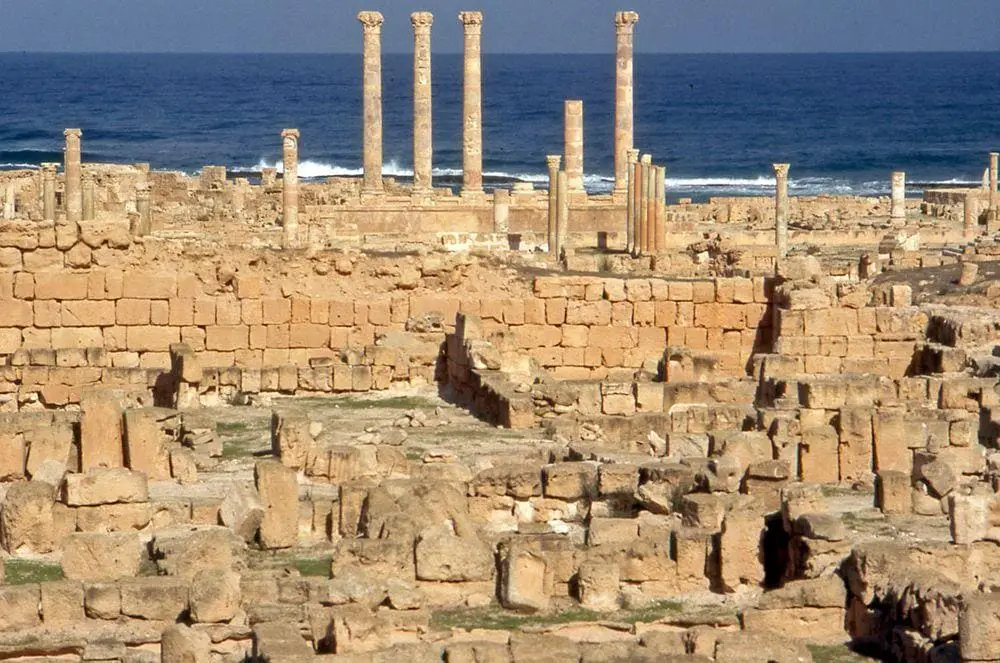
Tadrart Acacus rock paintings
Ghat
In these spectacular mountains are found numerous sites with thousands of rock paintings. Paintings have been created over an extended period of time from 12,000 BC to 100 AD. Many paintings are made in very high artistic quality, with skilled use of different colors and adjusted to the background. Most drawings show the daily activities of people, hunting scenes, and rituals.
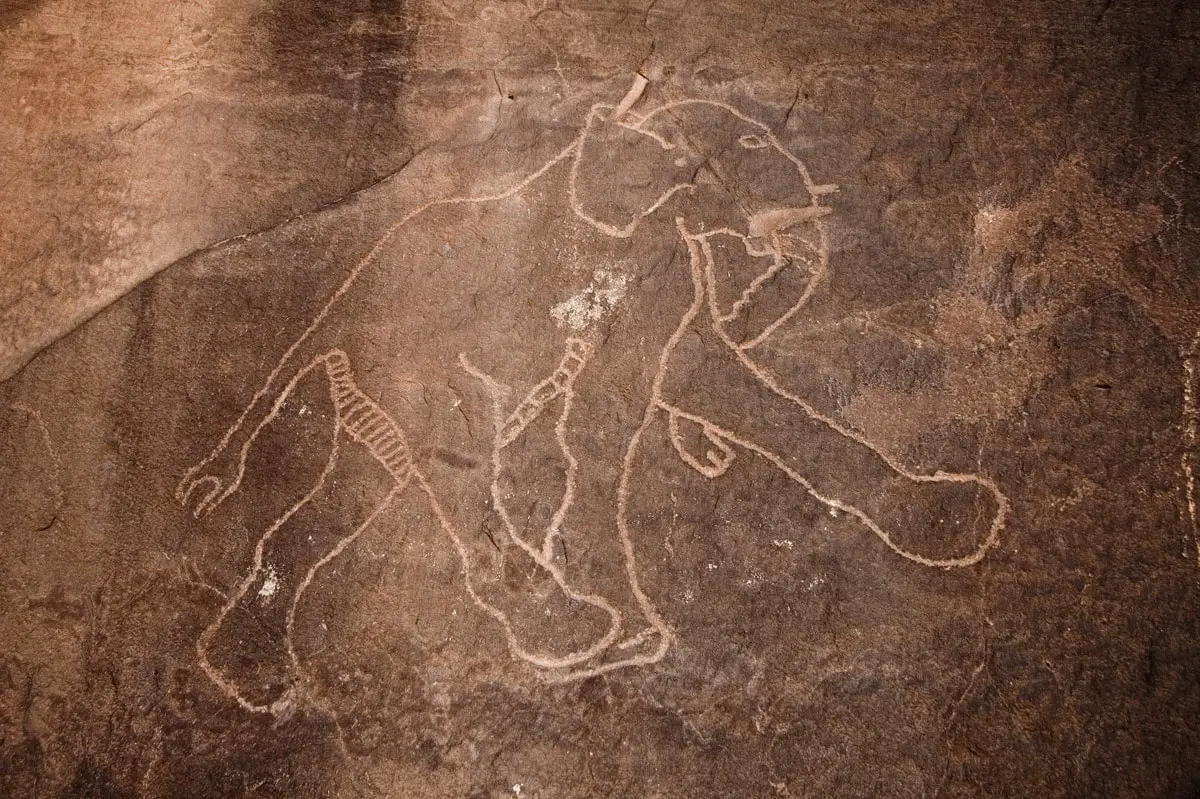
Wadi Mathendous
Wadi al Hayaa
This site is very rich with high-quality prehistoric rock engravings that were created some 8,000 years ago. The site contains engravings of elephants, giraffes, and crocodiles – animals that became extinct here millennia ago. One drawing shows a huge herd of giraffes, each animal is some 2 m high. In this region – Mesak Settafet – are found numerous other sites with petroglyphs.
Slonta Grotto
Jabal al Akhdar
A very old cult site that was mentioned by Herodotus already in 500 BC. Petroglyphs and sculptures have been carved into the walls.
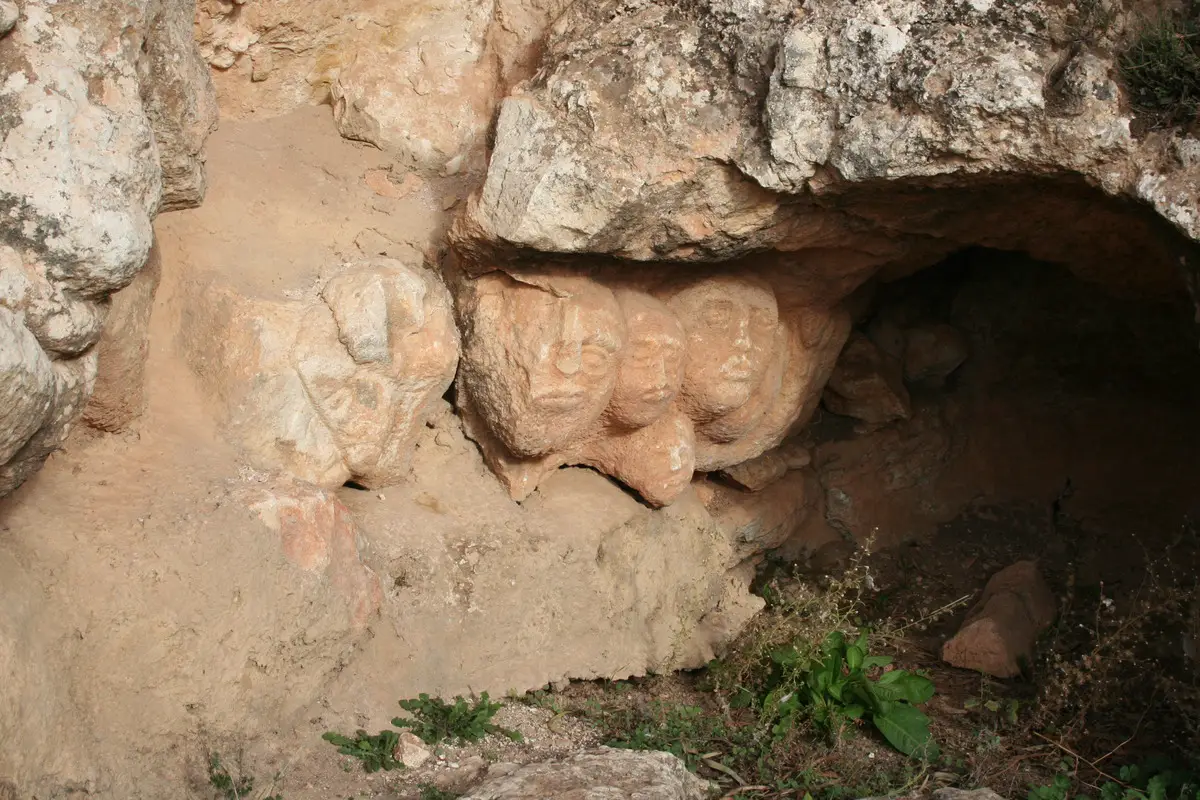
Germa (Garama)
Wadi al Hayaa
An abandoned desert city, the capital of Garamantes that flourished in the 2nd – 3rd century AD. Captured by Arabs in the 7th century AD.
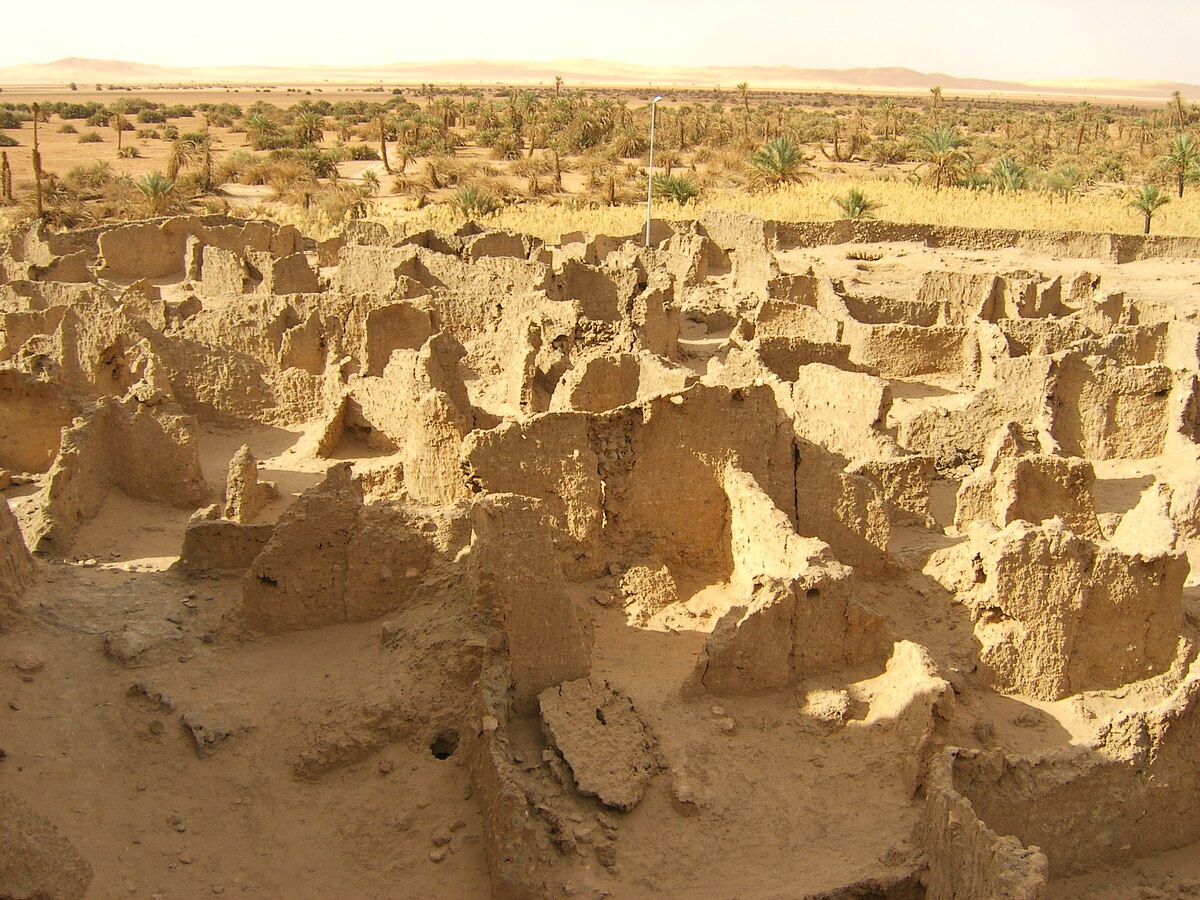
Senam Semana
Murqub
Group of 17 ancient Roman olive presses that for a while were considered to be prehistoric megaliths – trilithons. There are other groups of such olive presses too – f.e. Kherbet Agoub.
Apollonia (Libya)
Jabal al Akhdar
The ancient port city of Cyrene. It was founded by Greek colonists and now the city is partly inundated due to earthquakes. Here are the ruins of three churches but especially impressive is the Greek theatre.
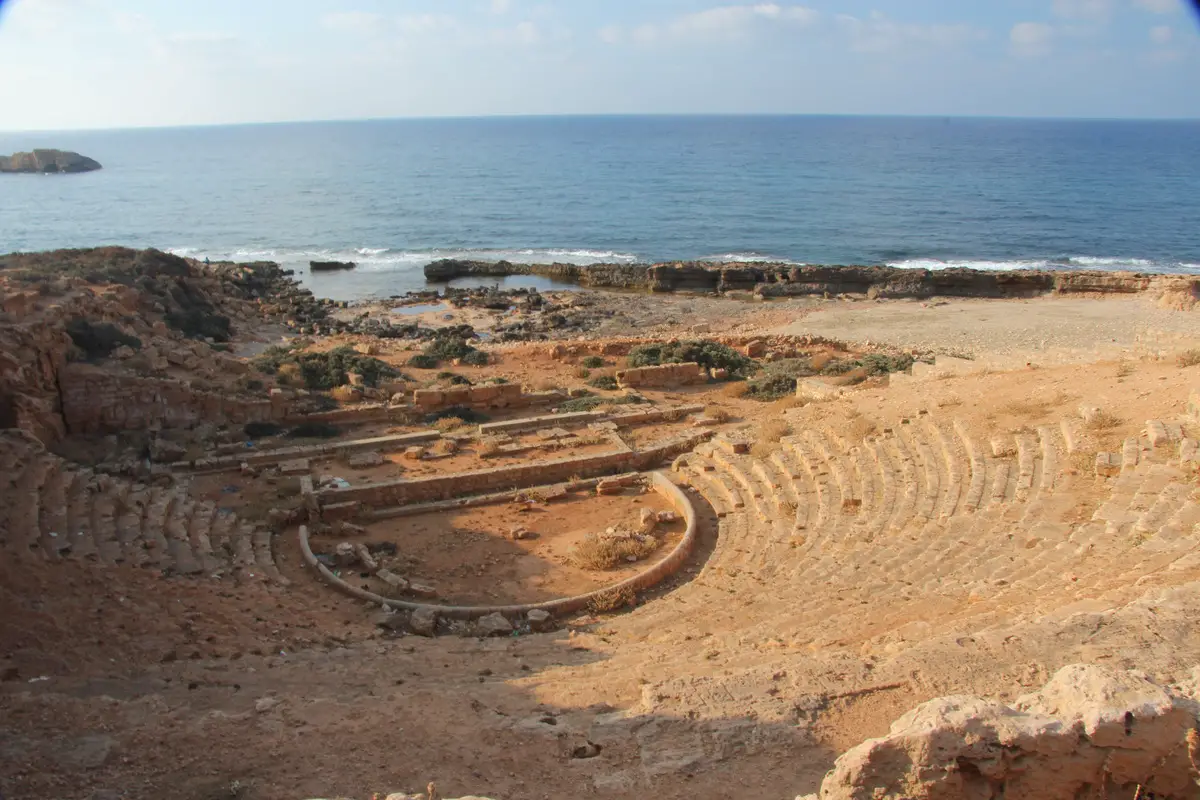
Germa pyramids (Jerma, Jarmah) (Ahramat al-Hattya)
Wadi al Hayaa
Necropolis in the former capital of Fazzan – Kingdom of Garamantes, created in the 1st – 4th century AD.
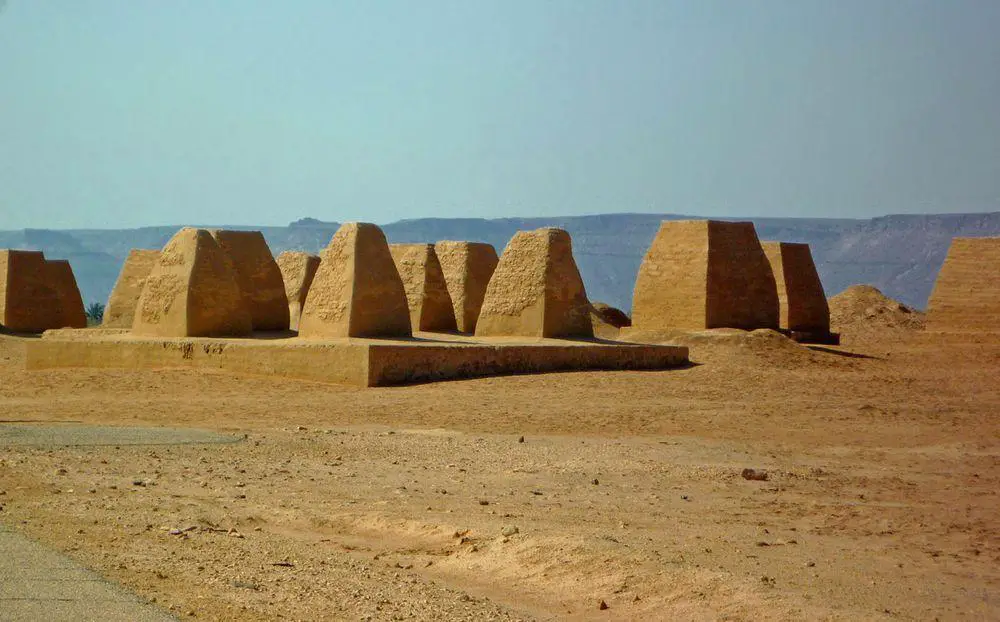
Arch of Marcus Aurelius
Tripoli
The only visible remains of Roman structures in Tripoli. The arch was built in the 2nd century AD.
Haua Fteah Cave
Jabal al Akhdar
A spectacular, wide, and shallow cave, up to 20 m high, 40 m deep, and 85 m wide. Cave has served as a shelter for extended periods of time, cultural deposits are more than 12.5 m deep. Excavations in this cave have provided valuable information about the history of the whole of North Africa.
Ptolemais
Marj
Well preserved ruins of an ancient city, most likely founded in the 7th – 6th century BC. Later it became a Roman city and was an important center until 428 AD when it was destroyed by Vandals. The city contains an extensive network of underground passages.
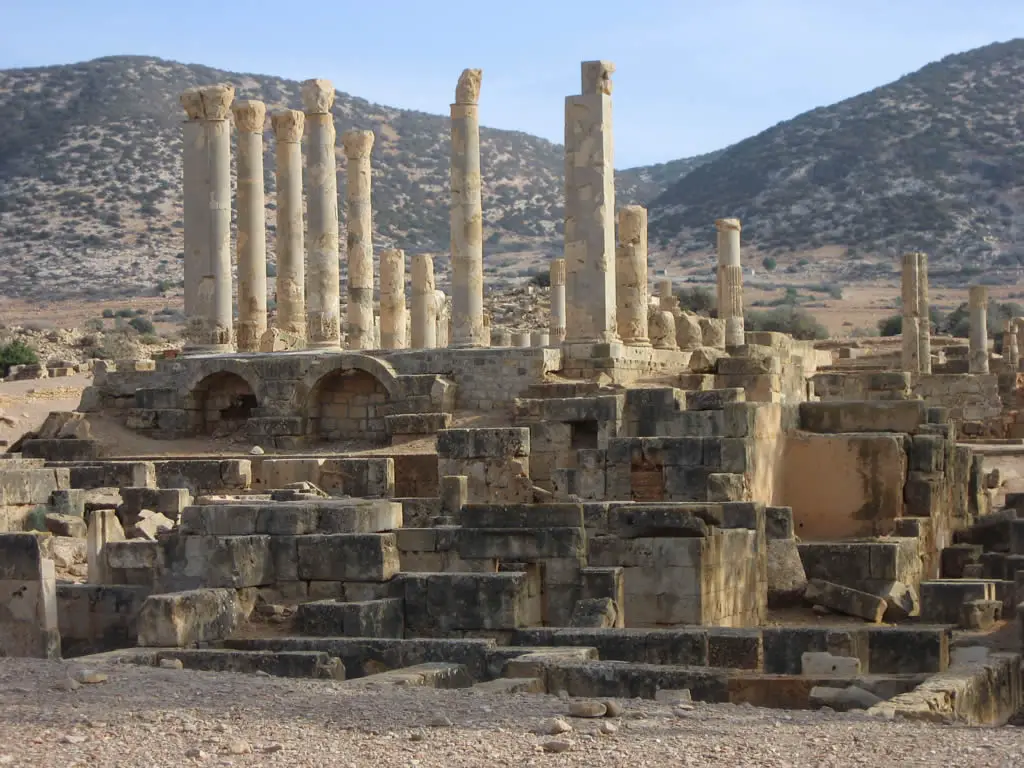
Zinchecra (Zankakrah)
Wadi al Hayaa
Abandoned fortress town on the top of a hill. The first capital of Garamantes flourished in the 9th – 1st century BC. Circular buildings were built here initially, the village was enclosed in a wall.
Architecture wonders
Ghadames
Nalut
A beautiful, walled desert town with excellent infrastructure providing protection from heat. One of the ways to avoid the heat is covered walkways between the buildings. The city was first mentioned in the 1st century BC.
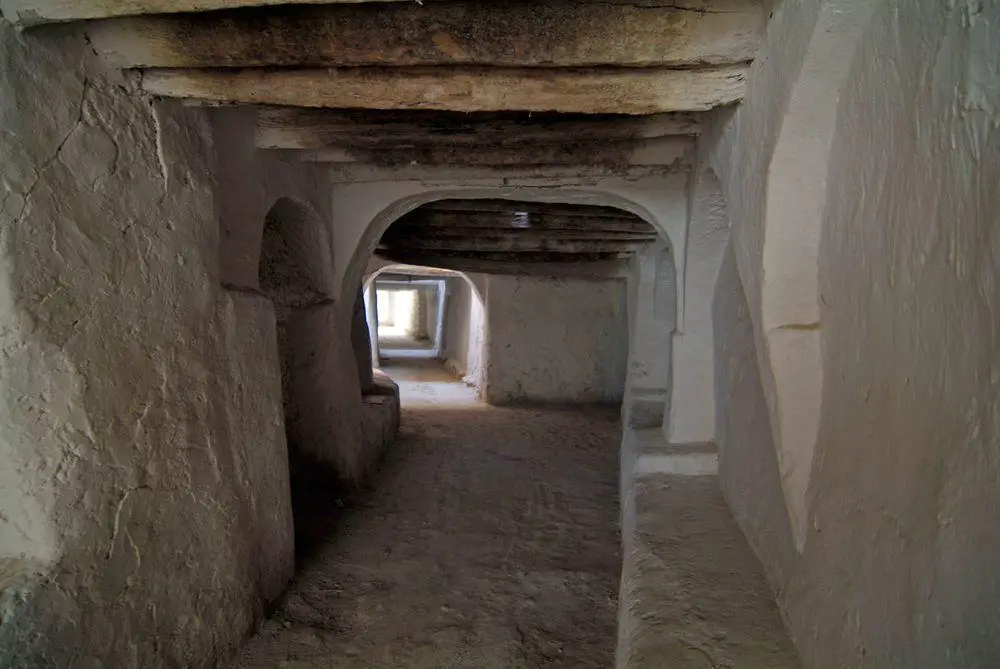
Tarmeisa
Jabal al Gharbi
Hilltop village, almost abandoned. This ancient Berber village is surrounded by dramatic mountain scenery, houses are adorned with ancient ornaments. The village can be accessed through underground passages.
Ksar Nalut
Nalut
Typical ksar – fortified granary, built in the 11th century on the hilltop to make its defense easier. It is abandoned since the 1960s.
Quasr al Hajj granary
Jabal al Gharbi
Enormous, fortified granary. This structure has an oval form and multiple smaller premises for the grain supplies of local families.
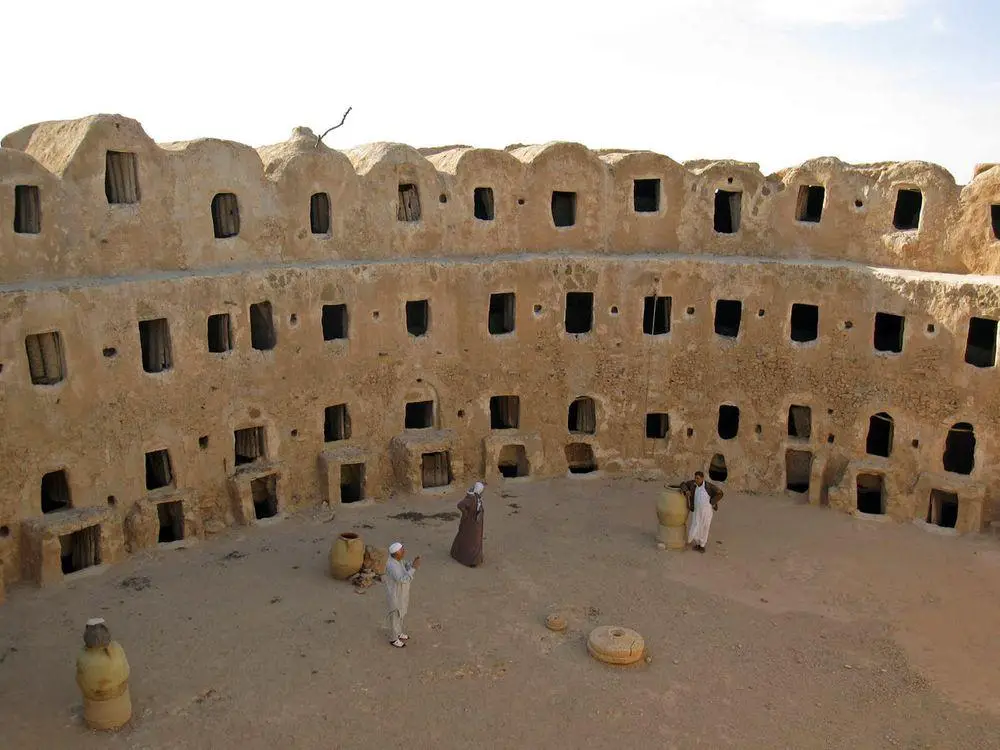
Tripoli Old City
Tripoli
Well preserved, albeit dirty, and dilapidated historical center of Tripoli with its fortification walls still standing.
Atiq Mosque
Al Wahat
An old mosque, built in the 12th century in vernacular style from adobe and limestone. It has 21 conical domes that provide light and ventilation.
Garian troglodyte houses
Jabal al Gharbi
In earlier times local people built their houses underground to escape the heat in summer and cold in winter. There was made central courtyard – a hole in the ground with entrances into several underground apartments. One such house has been well preserved since 1666 and now serves as an exclusive hotel.
Tripoli Cathedral
Tripoli
Ornate cathedral, built in Neo-Romanesque style in 1928. Now converted into a mosque.
 Recommended books
Recommended books
Tripolitania (Libya Archaeological Guides)
This is the first in a new series of guides to the archaeology of Libya, from prehistoric times until the invasion of the Bani Hilal in AD 1051. It deals with a region that offers the visitor not only the classical splendors of UNESCO World Heritage Sites such as Sabratha and Lepcis Magna but also a hinterland that is rich in standing monuments of the Punic, Roman, and early Islamic periods.
Libya – Culture Smart!: The Essential Guide to Customs & Culture
Culture Smart! provides essential information on attitudes, beliefs, and behavior in different countries, ensuring that you arrive at your destination aware of basic manners, common courtesies, and sensitive issues. These concise guides tell you what to expect, how to behave, and how to establish a rapport with your hosts.

